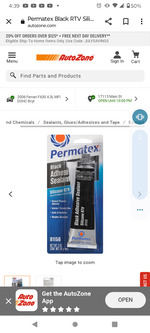JHZR2
Staff member
I had been chasing water in the floorboard in my 1991 Mercedes 350sd.
I thought it was the typical foam condensate drain failure. That tube wasn’t in great shape.

But I wasn’t actually seeing a lot of moisture coming from the drain. I found it coming from the case. I probed around and found a small hole.

I suspect maybe at some time the clip holding the parking brake cable in place, which practically touches the evaporator box, was pushed up and broke the box.
There is some surface rust on the floor by the throttle. I thought it was from salty shoes, but I think it’s from this!!
So here’s the hole:


To drive home I used the only thing I had, blue painters tape. And naturally it started to seep. So I’d like to figure out the adhesives to do the repair.
I don’t know what’s in there, looks like some debris. But I won’t mess unless some day I need to change the evaporator or heater core. Until then I’d like to plug it.
I was seriously thinking of chewing gum to clog the hole, and then flex tape or gorilla tape to seal it. Maybe that’s the best bet or perhaps with some low energy plastics adhesive mix jammed in there then some tape or other covering.
It’s very tight and uncomfortable to access.
Any suggestions?
I thought it was the typical foam condensate drain failure. That tube wasn’t in great shape.
But I wasn’t actually seeing a lot of moisture coming from the drain. I found it coming from the case. I probed around and found a small hole.
I suspect maybe at some time the clip holding the parking brake cable in place, which practically touches the evaporator box, was pushed up and broke the box.
There is some surface rust on the floor by the throttle. I thought it was from salty shoes, but I think it’s from this!!
So here’s the hole:
To drive home I used the only thing I had, blue painters tape. And naturally it started to seep. So I’d like to figure out the adhesives to do the repair.
I don’t know what’s in there, looks like some debris. But I won’t mess unless some day I need to change the evaporator or heater core. Until then I’d like to plug it.
I was seriously thinking of chewing gum to clog the hole, and then flex tape or gorilla tape to seal it. Maybe that’s the best bet or perhaps with some low energy plastics adhesive mix jammed in there then some tape or other covering.
It’s very tight and uncomfortable to access.
Any suggestions?

